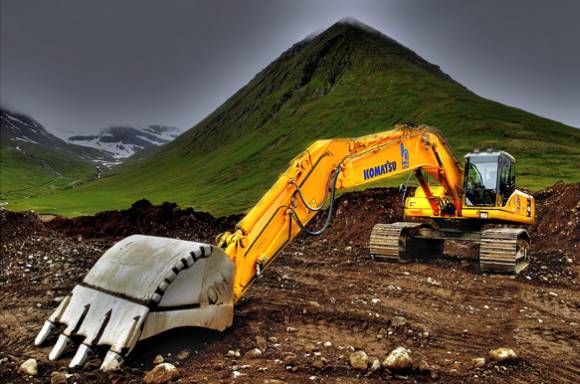|
|
Excavators
|
• The other option is a hinge at the base of the boom allowing it to hydraulically pivot up to 180° independent to the house, however this is generally available only to compact excavators.
Attached to the end of the boom is the stick (or dipper arm). The stick provides the digging force needed to pull the bucket through the ground. The stick length is optional depending whether reach (longer stick) or break-out power (shorter stick) is required.
On the end of the stick is usually a bucket. A wide, large capacity (Mud) bucket with a straight cutting edge is used for cleanup and levelling or where the material to be dug is soft, and teeth are not required. A general purpose (GP) bucket is generally smaller, stronger, and has hardened side cutters and teeth used to break through hard ground and rocks. Buckets have numerous shapes and sizes for various applications. There are also many other attachments which are available to be attached to the excavator for boring, ripping, crushing, cutting, lifting, etc.
Before the 1990s, all excavators had a long or conventional counterweight that hung off the rear of the machine to provide more digging force and lifting capacity. This became a nuisance when working in confined areas. In 1993 Yanmar launched the world's first Zero Tail Swing excavator, which allows the counterweight to stay inside the width of the tracks as it slews, thus being safer and more user friendly when used in a confined space. This type of machine is now widely used throughout the world.
|
|









